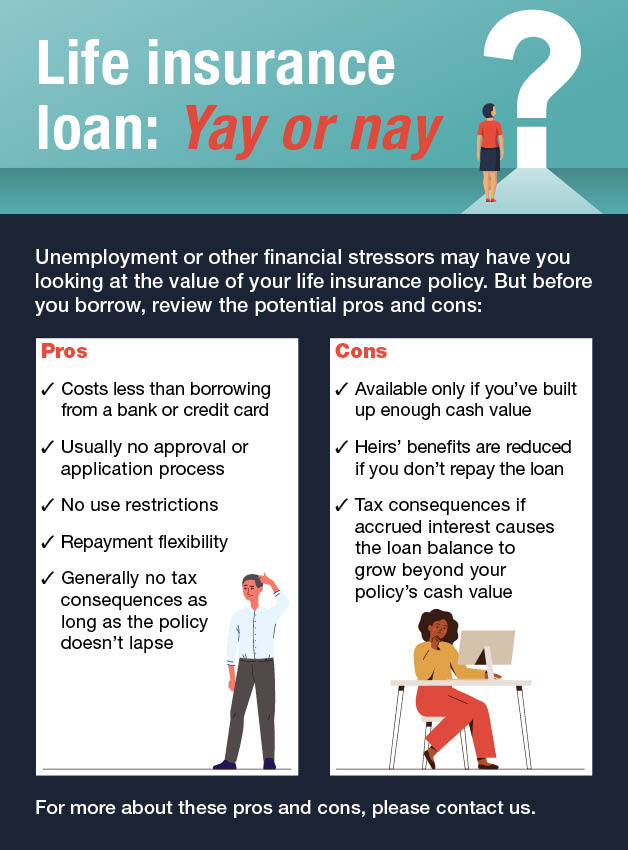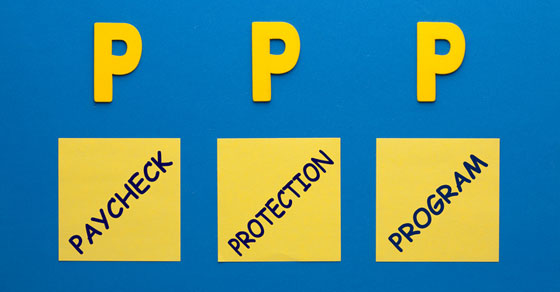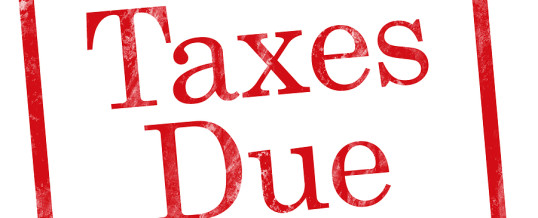
During the COVID-19 pandemic, many people are working from home. If you’re self-employed and run your business from your home or perform certain functions there, you might be able to claim deductions for home office expenses against your business income. There are two methods for claiming this tax break: the actual expenses method and the simplified method.
Who qualifies?
In general, you qualify for home office deductions if part of your home is used “regularly and exclusively” as your principal place of business.
If your home isn’t your principal place of business, you may still be able to deduct home office expenses if 1) you physically meet with patients, clients or customers on your premises, or 2) you use a storage area in your home (or a separate free-standing structure, such as a garage) exclusively and regularly for business.
What can you deduct?
Many eligible taxpayers deduct actual expenses when they claim home office deductions. Deductible home office expenses may include:
- Direct expenses, such as the cost of painting and carpeting a room used exclusively for business,
- A proportionate share of indirect expenses, including mortgage interest, rent, property taxes, utilities, repairs and insurance, and
- Depreciation.
But keeping track of actual expenses can take time and require organization.
How does the simpler method work?
Fortunately, there’s a simplified method: You can deduct $5 for each square foot of home office space, up to a maximum total of $1,500.
The cap can make the simplified method less valuable for larger home office spaces. But even for small spaces, taxpayers may qualify for bigger deductions using the actual expense method. So, tracking your actual expenses can be worth it.
Can I switch?
When claiming home office deductions, you’re not stuck with a particular method. For instance, you might choose the actual expense method on your 2020 return, use the simplified method when you file your 2021 return next year and then switch back to the actual expense method for 2022. The choice is yours.
What if I sell the home?
If you sell — at a profit — a home that contains (or contained) a home office, there may be tax implications. We can explain them to you.
Also be aware that the amount of your home office deductions is subject to limitations based on the income attributable to your use of the office. Other rules and limitations may apply. But any home office expenses that can’t be deducted because of these limitations can be carried over and deducted in later years.
Do employees qualify?
Unfortunately, the Tax Cuts and Jobs Act suspended the business use of home office deductions from 2018 through 2025 for employees. Those who receive a paycheck or a W-2 exclusively from their employers aren’t eligible for deductions, even if they’re currently working from home.
We can help you determine if you’re eligible for home office deductions and how to proceed in your situation.
Merger and acquisition activity in many industries slowed during 2020 due to COVID-19. But analysts expect it to improve in 2021 as the country comes out of the pandemic. If you are considering buying or selling another business, it’s important to understand the tax implications.
Two ways to arrange a deal
Under current tax law, a transaction can basically be structured in two ways:
1. Stock (or ownership interest). A buyer can directly purchase a seller’s ownership interest if the target business is operated as a C or S corporation, a partnership, or a limited liability company (LLC) that’s treated as a partnership for tax purposes.
The current 21% corporate federal income tax rate makes buying the stock of a C corporation somewhat more attractive. Reasons: The corporation will pay less tax and generate more after-tax income. Plus, any built-in gains from appreciated corporate assets will be taxed at a lower rate when they’re eventually sold.
The current law’s reduced individual federal tax rates have also made ownership interests in S corporations, partnerships and LLCs more attractive. Reason: The passed-through income from these entities also is taxed at lower rates on a buyer’s personal tax return. However, current individual rate cuts are scheduled to expire at the end of 2025, and, depending on actions taken in Washington, they could be eliminated earlier.
Keep in mind that President Biden has proposed increasing the tax rate on corporations to 28%. He has also proposed increasing the top individual income tax rate from 37% to 39.6%. With Democrats in control of the White House and Congress, business and individual tax changes are likely in the next year or two.
2. Assets. A buyer can also purchase the assets of a business. This may happen if a buyer only wants specific assets or product lines. And it’s the only option if the target business is a sole proprietorship or a single-member LLC that’s treated as a sole proprietorship for tax purposes.
Preferences of buyers
For several reasons, buyers usually prefer to buy assets rather than ownership interests. In general, a buyer’s primary goal is to generate enough cash flow from an acquired business to pay any acquisition debt and provide an acceptable return on the investment. Therefore, buyers are concerned about limiting exposure to undisclosed and unknown liabilities and minimizing taxes after a transaction closes.
A buyer can step up (increase) the tax basis of purchased assets to reflect the purchase price. Stepped-up basis lowers taxable gains when certain assets, such as receivables and inventory, are sold or converted into cash. It also increases depreciation and amortization deductions for qualifying assets.
Preferences of sellers
In general, sellers prefer stock sales for tax and nontax reasons. One of their objectives is to minimize the tax bill from a sale. That can usually be achieved by selling their ownership interests in a business (corporate stock or partnership or LLC interests) as opposed to selling assets
With a sale of stock or other ownership interest, liabilities generally transfer to the buyer and any gain on sale is generally treated as lower-taxed long-term capital gain (assuming the ownership interest has been held for more than one year).
Obtain professional advice
Be aware that other issues, such as employee benefits, can also cause tax issues in M&A transactions. Buying or selling a business may be the largest transaction you’ll ever make, so it’s important to seek professional assistance. After a transaction is complete, it may be too late to get the best tax results. Contact us about how to proceed.
A number of tax-related limits that affect businesses are annually indexed for inflation, and many have increased for 2021. Some stayed the same due to low inflation. And the deduction for business meals has doubled for this year after a new law was enacted at the end of 2020. Here’s a rundown of those that may be important to you and your business.
Social Security tax
The amount of employees’ earnings that are subject to Social Security tax is capped for 2021 at $142,800 (up from $137,700 for 2020).
Deductions
- Section 179 expensing:
- Limit: $1.05 million (up from $1.04 million for 2020)
- Phaseout: $2.62 million (up from $2.59 million)
- Income-based phase-out for certain limits on the Sec. 199A qualified business income deduction begins at:
- Married filing jointly: $329,800 (up from $326,600)
- Married filing separately: $164,925 (up from $163,300)
- Other filers: $164,900 (up from $163,300)
Business meals
Deduction for eligible business-related food and beverage expenses provided by a restaurant: 100% (up from 50%)
Retirement plans
- Employee contributions to 401(k) plans: $19,500 (unchanged from 2020)
- Catch-up contributions to 401(k) plans: $6,500 (unchanged)
- Employee contributions to SIMPLEs: $13,500 (unchanged)
- Catch-up contributions to SIMPLEs: $3,000 (unchanged)
- Combined employer/employee contributions to defined contribution plans: $58,000 (up from $57,000)
- Maximum compensation used to determine contributions: $290,000 (up from $285,000)
- Annual benefit for defined benefit plans: $230,000 (up from $225,000)
- Compensation defining a highly compensated employee: $130,000 (unchanged)
- Compensation defining a “key” employee: $185,000 (unchanged)
Other employee benefits
- Qualified transportation fringe-benefits employee income exclusion: $270 per month (unchanged)
- Health Savings Account contributions:
- Individual coverage: $3,600 (up from $3,550)
- Family coverage: $7,200 (up from $7,100)
- Catch-up contribution: $1,000 (unchanged)
- Flexible Spending Account contributions:
- Health care: $2,750 (unchanged)
- Dependent care: $5,000 (unchanged)
These are only some of the tax limits that may affect your business and additional rules may apply. If you have questions, please contact us.
This year, the optional standard mileage rate used to calculate the deductible costs of operating an automobile for business decreased by one-and-one-half cents, to 56 cents per mile. As a result, you might claim a lower deduction for vehicle-related expenses for 2021 than you could for 2020 or 2019. This is the second year in a row that the cents-per-mile rate has decreased.
Deducting actual expenses vs. cents-per-mile
In general, businesses can deduct the actual expenses attributable to business use of vehicles. This includes gas, oil, tires, insurance, repairs, licenses and vehicle registration fees. In addition, you can claim a depreciation allowance for the vehicle. However, in many cases, certain limits apply to depreciation write-offs on vehicles that don’t apply to other types of business assets.
The cents-per-mile rate is useful if you don’t want to keep track of actual vehicle-related expenses. With this method, you don’t have to account for all your actual expenses. However, you still must record certain information, such as the mileage for each business trip, the date and the destination.
Using the cents-per-mile rate is also popular with businesses that reimburse employees for business use of their personal vehicles. These reimbursements can help attract and retain employees who drive their personal vehicles extensively for business purposes. Why? Under current law, employees can no longer deduct unreimbursed employee business expenses, such as business mileage, on their own income tax returns.
If you do use the cents-per-mile rate, be aware that you must comply with various rules. If you don’t comply, the reimbursements could be considered taxable wages to the employees.
The 2021 rate
As of January 1, 2021, the standard mileage rate for the business use of a car (van, pickup or panel truck) is 56 cents per mile. It was 57.5 cents for 2020 and 58 cents for 2019.
The business cents-per-mile rate is adjusted annually. It’s based on an annual study commissioned by the IRS about the fixed and variable costs of operating a vehicle, such as gas, maintenance, repair and depreciation. The rate partly reflects the current price of gas, which is down from a year ago. According to AAA Gas Prices, the average nationwide price of a gallon of unleaded regular gas was $2.42 recently, compared with $2.49 a year ago. Occasionally, if there’s a substantial change in average gas prices, the IRS will change the cents-per-mile rate midyear.
When this method can’t be used
There are some situations when you can’t use the cents-per-mile rate. In some cases, it partly depends on how you’ve claimed deductions for the same vehicle in the past. In other cases, it depends on if the vehicle is new to your business this year or whether you want to take advantage of certain first-year depreciation tax breaks on it.
As you can see, there are many factors to consider in deciding whether to use the mileage rate to deduct vehicle expenses. We can help if you have questions about tracking and claiming such expenses in 2021 — or claiming them on your 2020 income tax return.
![]()
 Please join us in congratulating Julie Yule, CPA, on her recent promotion to Tax Manager! Julie Yule joined Ullrich Delevati, CPAs in 1996, and for over 20 years, she has provided insightful and consistent tax planning and preparation services, accounting, and consulting services to our clients. As a CPA and Senior Accountant in the firm, Julie has a long history of working with a wide range of individuals and businesses to provide them with complete accounting services to include specialized income tax services.
Please join us in congratulating Julie Yule, CPA, on her recent promotion to Tax Manager! Julie Yule joined Ullrich Delevati, CPAs in 1996, and for over 20 years, she has provided insightful and consistent tax planning and preparation services, accounting, and consulting services to our clients. As a CPA and Senior Accountant in the firm, Julie has a long history of working with a wide range of individuals and businesses to provide them with complete accounting services to include specialized income tax services.
As the firm’s new Tax Manager, Yule will expand her role to include supporting the Partners and staff with tax research, the review of complex federal and state tax returns, and act as the firm’s primary knowledge base for state taxation, tax law changes, and tax engagements. Yule will also serve our firm’s primary trainer and point person for tax law changes and assist with the both the training and implementation of the firm’s Ultra Tax software system. All the while, continuing to help grow our client base with the exemplary service and uncompromising quality we’re known for while strengthening our firm’s ability to serve our clients.
As one of our firm’s two most senior QuickBooks Pro Advisors, Yule will continue leading the firm in our client service areas of QuickBooks account set-ups, conversions to QuickBooks Online, and training on how to use the software most effectively.
We thank Julie Yule for her ongoing service and are excited to support her in her continued success!
To learn more about how Ullrich Delevati, CPAs can help provide financial clarity for your business or personal ventures, email info@udcpas.com, call 530-666-6671, or visit our website www.udcpas.com.
The Small Business Administration (SBA) announced that the Paycheck Protection Program (PPP) reopened the week of January 11. If you’re fortunate to get a PPP loan to help during the COVID-19 crisis (or you received one last year), you may wonder about the tax consequences.
Background on the loans
In March of 2020, the CARES Act became law. It authorized the SBA to make loans to qualified businesses under certain circumstances. The law established the PPP, which provided up to 24 weeks of cash-flow assistance through 100% federally guaranteed loans to eligible recipients. Taxpayers could apply to have the loans forgiven to the extent their proceeds were used to maintain payroll during the COVID-19 pandemic and to cover certain other expenses.
At the end of 2020, the Consolidated Appropriations Act (CAA) was enacted to provide additional relief related to COVID-19. This law includes funding for more PPP loans, including a “second draw” for businesses that received a loan last year. It also allows businesses to claim a tax deduction for the ordinary and necessary expenses paid from the proceeds of PPP loans.
Second draw loans
The CAA permits certain smaller businesses who received a PPP loan and experienced a 25% reduction in gross receipts to take a PPP second draw loan of up to $2 million.
To qualify for a second draw loan, a taxpayer must have taken out an original PPP Loan. In addition, prior PPP borrowers must now meet the following conditions to be eligible:
- Employ no more than 300 employees per location,
- Have used or will use the full amount of their first PPP loan, and
- Demonstrate at least a 25% reduction in gross receipts in the first, second or third quarter of 2020 relative to the same 2019 quarter. Applications submitted on or after Jan. 1, 2021, are eligible to utilize the gross receipts from the fourth quarter of 2020.
To be eligible for full PPP loan forgiveness, a business must generally spend at least 60% of the loan proceeds on qualifying payroll costs (including certain health care plan costs) and the remaining 40% on other qualifying expenses. These include mortgage interest, rent, utilities, eligible operations expenditures, supplier costs, worker personal protective equipment and other eligible expenses to help comply with COVID-19 health and safety guidelines or equivalent state and local guidelines.
Eligible entities include for-profit businesses, certain non-profit organizations, housing cooperatives, veterans’ organizations, tribal businesses, self-employed individuals, sole proprietors, independent contractors and small agricultural co-operatives.
Deductibility of expenses paid by PPP loans
The CARES Act didn’t address whether expenses paid with the proceeds of PPP loans could be deducted on tax returns. Last year, the IRS took the position that these expenses weren’t deductible. However, the CAA provides that expenses paid from the proceeds of PPP loans are deductible.
Cancellation of debt income
Generally, when a lender reduces or cancels debt, it results in cancellation of debt (COD) income to the debtor. However, the forgiveness of PPP debt is excluded from gross income. Your tax attributes (net operating losses, credits, capital and passive activity loss carryovers, and basis) wouldn’t generally be reduced on account of this exclusion.
Assistance provided
This only covers the basics of applying for PPP loans, as well as the tax implications. Contact us if you have questions or if you need assistance in the PPP loan application or forgiveness process.
February 1, 2021
Individuals who must make estimated tax payments. If you did not pay your last installment of estimated tax by January 15, you may choose (but are not required) to file your income tax return (Form 1040 or Form 1040-SR) for 2020 by February 1. Filing your return and paying any tax due by February 1, 2021, prevents any penalty for late payment of the last installment. If you cannot file and pay your tax by February 1, file and pay your tax by April 15.
Employers – Give your employees their copies of Form W-2 for 2020. If an employee agreed to receive Form W-2 electronically, have it posted on a website and notify the employee of the posting. File Form W-3, Transmittal of Wage and Tax Statements, along with Copy A of all the Forms W-2 you issued for 2020.
Businesses – Give annual information statements to recipients of certain payments made during 2020. You can use the appropriate version of Form 1099 or other information return. Form 1099 can be issued electronically with the consent of the recipient.
Payers of nonemployee compensation – File Form 1099-NEC for nonemployee compensation paid in 2020.
Payers of Gambling Winnings – If you either paid reportable gambling winnings or withheld income tax from gambling winnings, give the winners their copies of Form W-2G.
Employers – Nonpayroll taxes. File Form 945 to report income tax withheld for 2020 on all nonpay-roll items, including backup withholding and withholding on pensions, annuities, IRAs, gambling winnings, and payments of Indian gaming profits to tribal members. Deposit or pay any undeposited tax under the accuracy of deposit rules. If your tax liability is less than $2,500, you can pay it in full with a timely filed return. If you deposited the tax for the year timely, properly, and in full, you have until February 10 to file the return.
Employers – Social Security, Medicare, and withheld income tax. File Form 941 for the fourth quarter of 2020. Deposit or pay any undeposited tax under the accuracy of deposit rules. If your tax liability is less than $2,500, you can pay it in full with a timely filed return. If you deposited the tax for the quarter timely, prop-erly, and in full, you have until February 10 to file the return.
Employers – Federal unemployment tax. File Form 940 for 2020. If your undeposited tax is $500 or less, you can either pay it with your return or deposit it. If it is more than $500, you must deposit it. However, if you deposited the tax for the year timely, properly, and in full, you have until February 10 to file the return.
Certain Small Employers – File Form 944 to report Social Security and Medicare taxes and withheld income tax for 2020. Deposit or pay any undeposited tax under the accuracy of deposit rules. If your tax liability is $2,500 or more for 2020 but less than $2,500 for the fourth quarter, deposit any undeposited tax or pay it in full with a timely filed return. If you deposited the tax for the year timely, prop-erly, and in full, you have until February 10 to file the return.
Farm Employers – File Form 943 to report Social Security and Medicare taxes and withheld income tax for 2020. Deposit or pay any undeposited tax under the accuracy of deposit rules. If your tax liability is less than $2,500, you can pay it in full with a timely filed return. If you deposited the tax for the year timely, properly, and in full, you have until February 10 to file the return.
February 10, 2021
Employees – who work for tips. If you received $20 or more in tips during January, report them to your employer. You can use Form 4070.
Employers – Nonpayroll taxes. File Form 945 to report income tax withheld for 2020 on all nonpayroll items. This due date applies only if you deposited the tax for the year in full and on time.
Certain Small Employers – File Form 944 to report Social Security and Medicare taxes and withheld income tax for 2020. This tax due date applies only if you deposited the tax for the year in full and on time.
Farm Employers – File Form 943 to report Social Security and Medicare taxes and withheld income tax for 2020. This due date applies only if you deposited the tax for the year in full and on time.
Employers – Federal unemployment tax. File Form 940 for 2020. This due date applies only if you deposited the tax for the year in full and on time.
Employers – Social Security, Medicare, and withheld income tax. File Form 941 for the fourth quarter of 2020. This due date applies only if you deposited the tax for the quarter in full and on time.
February 16, 2021
Individuals – If you claimed exemption from income tax witholding last year on the Form W-4 you gave your employer, you must file a new Form W-4 by this date to continue your exemption for another year.
Businesses – Give annual information statements to recipients of certain payments made during 2020. You can use the appropriate version of Form 1099 or other information return. This due date applies only to payments reported on Form 1099-B, Form 1099-S, and substitute payments reported in Box 8 or gross proceeds paid to an attorney reported in Box 10 of Form 1099-MISC.
Employers – Social Security, Medicare, and withheld income tax. If the monthly deposit rule applies, deposit the tax for payments in January.
Employers – Nonpayroll withholding. If the monthly deposit rule applies, deposit the tax for payments in January.
Employers – Begin withholding income tax from the pay of any employee who claimed exemption from withholding in 2020, but did not give you a new Form W-4 to continue the exemption this year.
COVID-19 has shut down many businesses, causing widespread furloughs and layoffs. Fortunately, employers that keep workers on their payrolls are eligible for a refundable Employee Retention Tax Credit (ERTC), which was extended and enhanced in the latest law.
Background on the credit
The CARES Act, enacted in March of 2020, created the ERTC. The credit:
- Equaled 50% of qualified employee wages paid by an eligible employer in an applicable 2020 calendar quarter,
- Was subject to an overall wage cap of $10,000 per eligible employee, and
- Was available to eligible large and small employers.
The Consolidated Appropriations Act, enacted December 27, 2020, extends and greatly enhances the ERTC. Under the CARES Act rules, the credit only covered wages paid between March 13, 2020, and December 31, 2020. The new law now extends the covered wage period to include the first two calendar quarters of 2021, ending on June 30, 2021.
In addition, for the first two quarters of 2021 ending on June 30, the new law increases the overall covered wage ceiling to 70% of qualified wages paid during the applicable quarter (versus 50% under the CARES Act). And it increases the per-employee covered wage ceiling to $10,000 of qualified wages paid during the applicable quarter (versus a $10,000 annual ceiling under the original rules).
Interaction with the PPP
In a change retroactive to March 12, 2020, the new law also stipulates that the employee retention credit can be claimed for qualified wages paid with proceeds from Paycheck Protection Program (PPP) loans that aren’t forgiven.
What’s more, the new law liberalizes an eligibility rule. Specifically, it expands eligibility for the credit by reducing the required year-over-year gross receipts decline from 50% to 20% and provides a safe harbor allowing employers to use prior quarter gross receipts to determine eligibility.
We can help
These are just some of the changes made to the ERTC, which rewards employers that can afford to keep workers on the payroll during the COVID-19 crisis. Contact us for more information about this tax saving opportunity.









